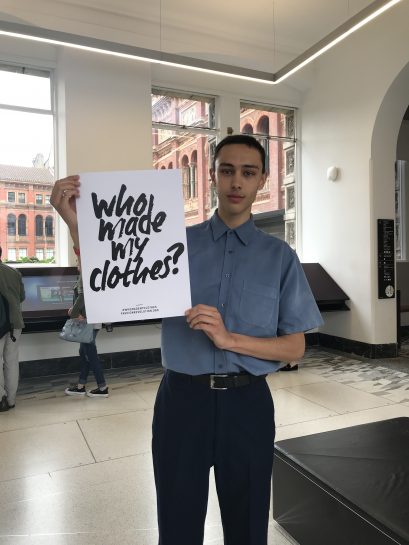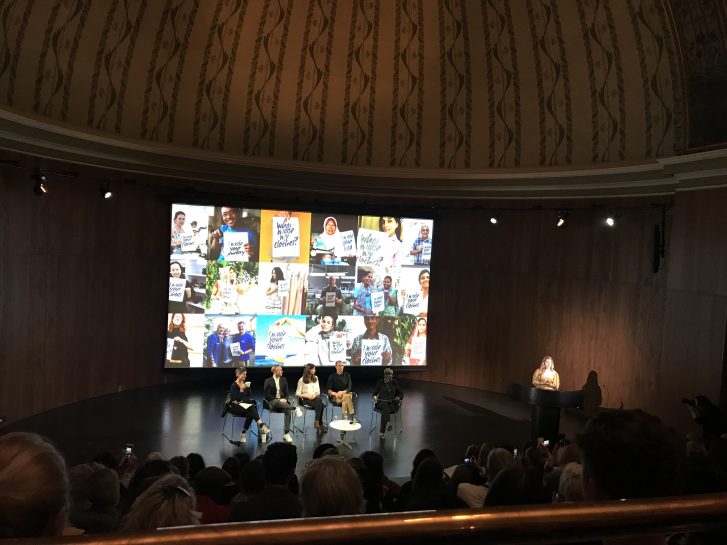Fashion Question Time at the V&A Museum
25/04/2019

Fashion Question Time was held at the V&A Museum in London yesterday as part of Fashion Revolution Week, debating how innovation and sustainability will change the fashion industry.
Chaired by Baroness Lola Young of Hornsey, the panel included Mary Creagh, MP and chair of the Environment Audit Committee (EAC); Laura Balmond, project manager at Ellen MacArthur Foundation; Mark Sumner, lecturer in sustainability, fashion and retail at the University of Leeds and Hendrik Alpen, sustainability engagement manager at the H&M Group.
For the first time the event was open to the public and questions covered the waste produced by the fashion industry, whose role it is to lead change, the future of the Bangladesh Accord and its role post-Rana Plaza, as well as the debate around natural fibres versus synthetics.
Carry Somers, Fashion Revolution co-founder and global operations director, said: “We’ve seen increasing disclosure from brands and numerous innovations in the way our clothes are made, but we are now in a climate emergency and we’re simply not getting ahead of the curve.”
“Transparency shouldn’t be limited to issues of modern slavery, working conditions or other social impacts but also to environmental policies, practices and impacts,” said Somers. “We cannot afford to live in a world where our clothes destroy the environment, harm or exploit people and reinforce gender inequality. Urgent, revolutionary action is needed.”
Laura Balmond, of the Ellen MacArthur Foundation, said that in order to change the current system, we need to fully understand what we have.
“The amount of clothes we produce are rapidly increasing, clothing production has doubled in 15 years and we’re using each garment less,” she said.
“The input materials are not always clear and design/manufacturing processes are rarely aligned with the notion of circular economy. We need to ensure that the materials going in are safe and that the design and construction are aligned with what happens after they are used in the first instance. There needs to be a huge systematic rethink of the industry as a whole.”
Mary Creagh said that the EAC’s recently-launched report called Fixing Fashion found that the reason there is an oversupply and overconsumption of clothes is because the real cost of those clothes are not truly priced.
“It will only change if we have true cost of fibres, processing, labour and transport and at the moment those costs are externalised to low cost countries: we are systematically undervaluing the cost of clothes. We all need to have a long hard look at our wardrobes and shifting those things we don’t wear to a second life. Retailers also need to take responsibility for the waste they produce.”
Baroness Lola Young of Hornsey added: “From corporations, to government to individual consumers, everybody who wears clothes has to think very carefully about what they buy and how to use their purchasing power. We don’t have the luxury of time to work out what we are going to do to stem excessive production and consumption in the fashion, and other industries.”
“We need to act now,” she concluded.

